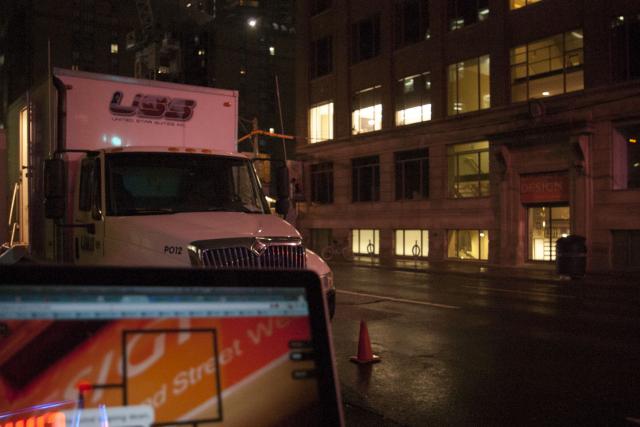Virtual vs physical experience
Submitted by Ambrose on Wed, 2013-03-13 00:08
 So I have been standing here, outside 240, filming the installation for the past half hour, and I just want to say that ths experience is entirely different from the experience I had inside, let alone the virtual experience on our web site.
The tweaked installation runs incredibly slow, almost imperceptibly slow. On the site that would be unbearable, but outside, on the actual official viewing spot, it is calming.
Well, the site is not even working. My old Mac must have overheated… Sigh…
So I have been standing here, outside 240, filming the installation for the past half hour, and I just want to say that ths experience is entirely different from the experience I had inside, let alone the virtual experience on our web site.
The tweaked installation runs incredibly slow, almost imperceptibly slow. On the site that would be unbearable, but outside, on the actual official viewing spot, it is calming.
Well, the site is not even working. My old Mac must have overheated… Sigh…